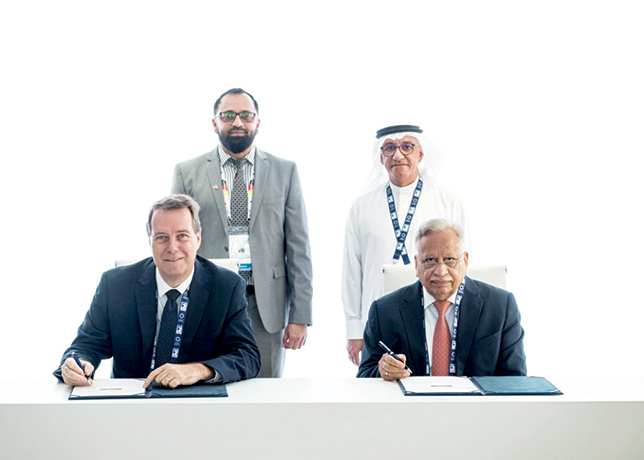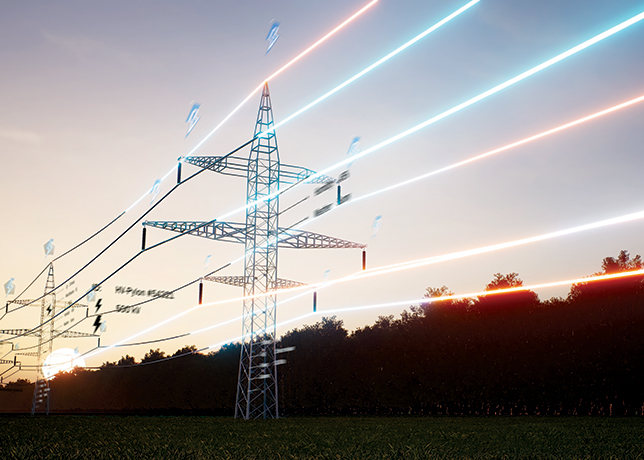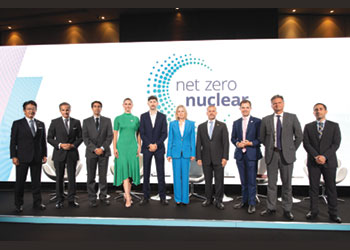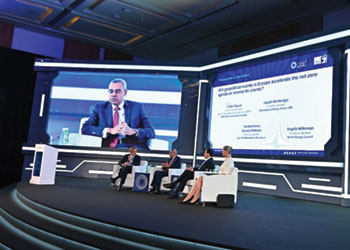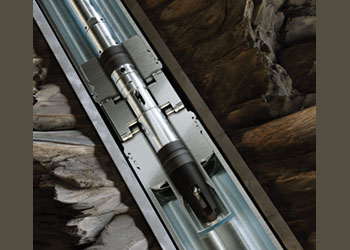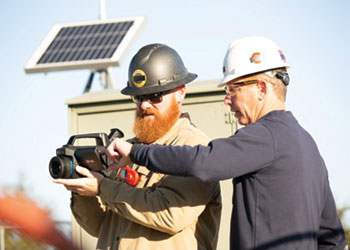
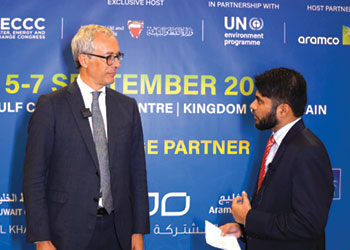 Arcelli ... poised for growth in the region and beyond
Arcelli ... poised for growth in the region and beyond
As the company continues a strong growth trajectory, it remains committed to its pledge of delivering power, water and green hydrogen reliably and responsibly
ACWA Power’s ability to drastically increase the efficiency of its power plants over the year has made it a developer of choice for many countries that are looking to increase power generation at home.
With a proven track record of building enormous plants, it claims to be the world’s largest private water desalination company, and the first mover into green hydrogen at scale.
To explain how the company is placed for growth in the coming years, Marco Arcelli, the CEO of ACWA Power, spoke to Abdulaziz Khattak of with OGN energy magazine in an exclusive interview.
When we talk about the region’s water needs, how safe are we?
We are very safe and secure in that we have great offtakers like the Saudi Water Partnership Company (SWPC) in Saudi Arabia and DEWA in Dubai, the UAE, that have forged a sturdy and reliable project development system.
Do you think we can continue with desalination considering that it’s a very energy intensive process?
Over the past 10-15 years, the energy intensity for producing 1 cubic metre of water has decreased by around 87 per cent. It has followed the same trajectory as renewables. This indicates that there is no need for concern about energy intensity.
Another concern expressed is the discharge of brine into water, but that is marginal. Nevertheless, models of water dispersion in the sea are being used to study the effects of this process on the seawater quality.
On the other hand, the demand for desalination is increasing in the region, Europe and the Americas, making it a key technology for reliable, safe water availability. We have signed agreements in Italy, demonstrating the potential of desalination as a key technology for ensuring water availability.
 |
The Shuaibah IWPP in Saudi Arabia |
ACWA Power is the largest private water desalination company in the world, with 7.6 million cu m per day desalination capacity. That is the equivalent of the needs of 20 million people in the Gulf region. The company has grown organically, building one plant at a time. And we will continue to build more plants.
We are looking beyond the region, starting with North Africa, China, Indonesia and Azerbaijan, and also exploring Latin America, Europe and other places.
In the end, water desalination is handled in the same way everywhere; through an independent power producers (IPP) model, where you get a tariff, and you can then supply these in an economical way.
The Taweelah desalination plant in Abu Dhabi is ACWA Power’s largest RO desal plant to date. Are we going to see anything larger than that?
We have built the largest water desalination plant four times in a row beating our own records each time. But the potential to build something bigger still exists in the region.
We do understand the different dynamics that every country has. For example, the opportunities we see in Morocco, Egypt, Indonesia, and China are smaller than those in the region.
What you have to see in these projects is whether you do a lot of desalination and then you pipe it away or you do it for the local needs. So considering this balance, we address the projects differently in every country.
Do you think it is better to have many small plants or just one big plant, to maintain efficiency?
Larger plants, of course, can lead to increased efficiency and lower energy consumption costs. However, it's important to consider other factors beyond just size when planning and implementing such projects.
How is efficiency measured at water desalination plants?
The main parameter we use is the specific consumption, that is, the amount of kilowatt hour (kWh) of energy required to produce 1 cu m of desalinated water. To give you an idea, we have gone from 15 kWh per cubic meter 10-15 years go to less than 2.7 kWh per cu m today.
How is ACWA Power reducing its carbon footprint?
Our power portfolio until six to seven years ago was fossil fuel. Today, it comprises 46 per cent renewable energy, highlighting the shift in energy sources. That’s Scope 1.
Regarding reduction of Scope 2 emissions, we have the example of our specific consumption reduction. The reduction in power consumption has been immense and is up to 87 per cent today.
Scope 3, however, remains a challenge because we as a power plant cannot fully influence the end user as much as a utility or an offtaker can. But we are definitely assessing our possible role in Scope 3.
What other environmental impacts do power plants have and how is ACWA Power dealing with that?
The other important element, in addition to brine, that we monitor is the use of chemicals, which are used to prevent water scaling and contamination.
For this, we are leveraging digitalisation and artificial intelligence (AI) for real-time monitoring of water treated in the plant and water that leaves the plant. This helps reduce the amount of chemicals needed for treatment.
How would you allay the concerns of environmental activists, who lament the huge cost of desal plants?
First, water desalination has really become efficient; second, it has minimum environmental impact; and third, the entire process is strictly controlled by national regulations to ensure adherence to a high level of efficiency.
The NEOM Green Hydrogen Project is ACWA Power’s largest in its green hydrogen portfolio. Where else are you investing in green hydrogen?
ACWA Power is the first mover in green hydrogen. We, along with our partners, Air Products and Neom, are developing the largest plant for green ammonia. Work is underway and that is evident from the various parts of the plant that are coming up at the site.
The plant has a significant investment of $8.5 billion, out of which $1 billion has been spent to date. It will produce 1.2 million tonnes of green ammonia annually. And when completed by the end of 2026, it will be the first of its kind.
We are also breaking ground in a few weeks on Phase 1 of a second ammonia plant, in Uzbekistan. The produce from the plant will be sold locally to a petrochemical and fertiliser company, and potentially scaled up for exports to Europe.
All these countries have called us to build projects because of the technical and contractual advantages that ACWA Power offers, which allows the acceleration of project development by a couple of years.
From a technical standpoint, ACWA Power has optimised the process. For example, in NEOM, we generate 4,000 megawatts (MW) of power, possess 400 gigawatt hour (GWh) of battery storage, and 2,000 MW of electrolyser. This optimisation ensures the lowest cost.
And contractually, for example, ACWA Power secured $6.1 billion in non-recourse financing from 23 banks, based purely on the merit of the project.
Where is the green hydrogen produced going to be exported to?
In the short term, green ammonia will primarily be used for fertilisers, shipping, and coal-fired plants, like in Japan to reduce the intensity of CO2 emissions.
By Abdulaziz Khattak




















